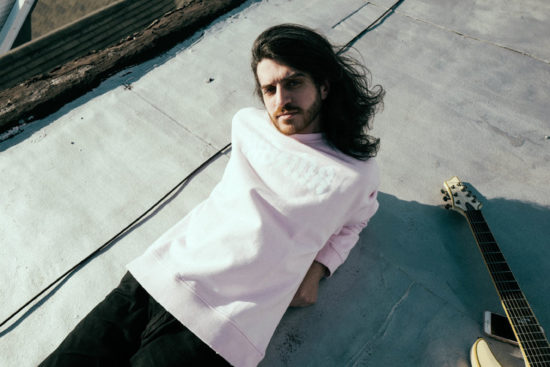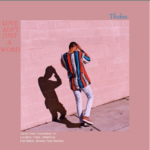Being an artist should always be about creating new things. The ones that just recreate old music will never last very long. Those that start their own trend can go down in history. Our recent discovery Johnny Buffalo is creating his own lane.
We had the chance to chat with the beatboxing guitarist about his journey. Enjoy the interview:
First off, what’s up with the name Johnny Buffalo?
It’s pretty simple: my name is Johnny and I’m from Buffalo, NY. Beatboxers often take stage names and this is what I chose for my beatbox name, which I’ve now embraced as my artist name. Buffalo is a very special place that I’m proud to be from, so I’m glad that I can represent my city with my name as an artist
How would describe your sound?
It’s a combination of all of my influences in music throughout my time as an artist. I started playing guitar at age 14, and was really big into classic rock artists like Jimi Hendrix, the Beatles, and Led Zeppelin. That evolved into heavier rock music and eventually metal. At college, I studied classical guitar. When I started beatboxing, I really fell in love with heavy bass music, specifically trap music as well as old-school hip hop beats. I soon realized that metal breakdowns and trap drops are basically the same, with some minor rhythmic differences. When I started this project, I wanted to combine heavy bass trap and hip hop production with rock guitar. Eventually, I added someone clean guitar, prettier sections as a nod to my classical studies, so my sound is a fusion of all of those things.
Which artists have had the biggest influence on Johnny Buffalo?
Mr. Carmack far and away is my biggest influence. I absolutely love his production style. He’s influenced my style as a producer, and even my style as a beatboxer. When I first started getting into trap producers, I was also a big fan of What So Not and RL Grime. I have beatboxers who have influenced me as well, and I’m lucky enough to call them friends. Reeps One and Gene Shinozaki I would say are my biggest two, as well as the Beatbox House. As a guitarist: Jimi Hendrix and Jimmy Page. Getting into metal, I really love Every Time I Die, Between the Buried and Me, Veil of Maya and Periphery, to name a few.
Beatboxing adds a totally fresh element to your sound. How did that all come to be?
I studied classical guitar and sound recording in college. The last semester of my senior year, I lived with my friend Chris Celiz, who was competing in the American Beatbox Championships that summer in 2012. He took me to a battle in Toronto in February of 2012, and I was immediately obsessed. Seeing what a modern day beatboxer was capable of left such a lasting impression on me, that I knew I needed it in my life. Chris taught me as he was getting ready for the championships that summer, and then after graduating, I moved to NYC with him. I was blessed to have a teacher who was already nationally ranked. After moving to NYC, I became part of an American beatboxing community that now holds some of the best beatboxers in the world. The beatboxing community is one of the most beautiful, inspiring accepting communities out there
Hear ‘Auburn Ave’ by Johnny Buffalo
How does a song come together for you? What is the songwriting process?
It differs from track to track. Usually, I’ll start with a beat type, whether it’s a down tempo trap beat, or a faster paced boom bap style beat. Then, I’ll start with the first drop, and figure out what synth sounds I want to use. After that, I’ll construct an intro / buildup. Then for the middle and end sections of a track, I’ll switch from synth to guitar. During live performances, I play the synth lines on guitar with a midi pickup, and then transition into actual guitar. When the real guitar comes in, it’s usually distorted, playing the same melody as the synth earlier in the track, and then I’ll sometimes add in some soloing as well.
In what way do you hope to connect with fans in your unique performance?
Beatboxing opened my mind to something ー the idea of performing electronic music live. I love the electronic music scene, but as someone who grew up playing in rock bands, I realized it was lacking in the performance aspect of entertainment. Going to a festival, it’s more about the production value of the music and the show, with laser lights and big LED displays. There are few artists who actually perform their music live. I wanted to construct a set that is 100% performance based and wireless. I don’t want to stand behind a table. I think there’s a human connection when you see someone performing live on stage, and that’s the connection that is the basis of my performance.
Give us some advice for other artists making music in their own lane?
Don’t rush things. It took 4 years for me to get a solid grasp on what my sound was, and it’s still evolving. Instead of rushing to release the first thing you make, keep creating and evolving, until you find yourself happy with where you’re at. My other suggestion is to try to combine unique elements and styles of music to create something new. Everything is fusing nowadays and nothing is off limits, which is really cool.
What is next for Johnny Buffalo?
Now that my first project is out, I’m excited to start working on the next! This year I want to gig and build more of a following and take that momentum into the next festival season. My goal is to play some electronic music festivals next spring and summer, and I am also planning to book a European tour next summer if all goes well. This project has been in the works for four years, but really it was when I started playing guitar 15 years ago. I’m ecstatic to be making something unique and am going to work as hard as I possibly can to see how far I can go with it…the sky’s the limit.
Learn more about Johnny Buffalo HERE.









